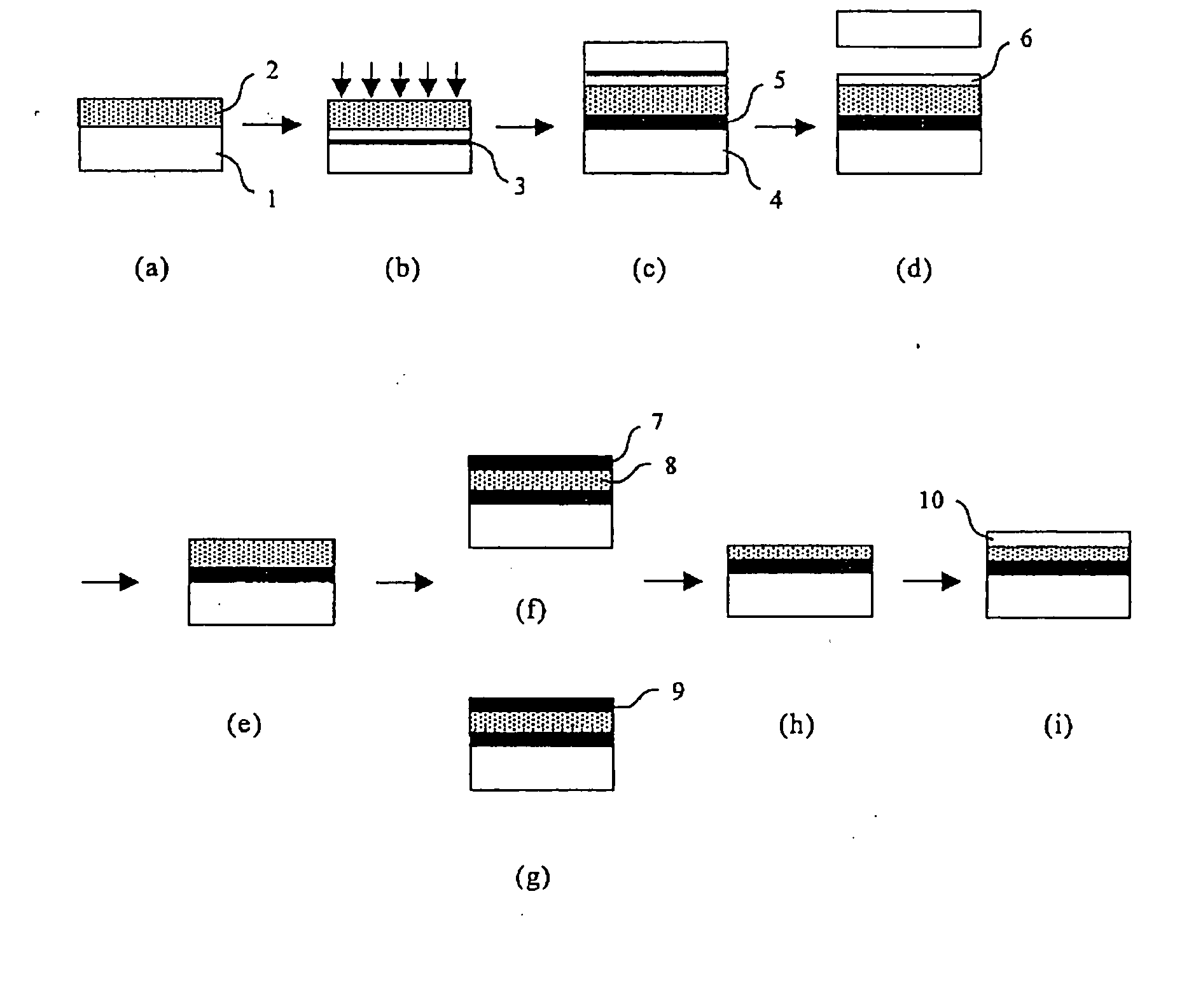Method For Producing Semiconductor Wafer
a technology of semiconductor wafers and semiconductors, applied in the direction of semiconductor devices, basic electric elements, electrical apparatus, etc., can solve the problems of degrading crystallinity, and achieve the effect of suppressing surface roughness and good crystallinity
- Summary
- Abstract
- Description
- Claims
- Application Information
AI Technical Summary
Benefits of technology
Problems solved by technology
Method used
Image
Examples
example 1
[0082] A SiGe layer (the Ge composition was 10%) was epitaxially grown only at approximately 120 nm by a CVD method, on a surface of a silicon single crystal wafer having a diameter of 200 mm, and through the SiGe layer, hydrogen ion (H+) was ion-implanted under the condition that the implantation energy was 20 keV and the dose amount was 5×1016 atoms / cm2, and thereby an ion implanted layer was formed inside the silicon single crystal wafer. After the hydrogen ion implantation, the surface of the SiGe layer was cleaned with an SC-1 cleaning solution. This surface and a silicon single crystal base wafer with a thermal oxide film of 100 nm were closely contacted at a room temperature, and delamination heat treatment was performed under an argon atmosphere at 500° C. for 30 min and thereby the delamination was performed at the ion implanted layer. Thereby, the SiGe layer and a part (Si layer) of the silicon single crystal wafer were transferred to a side of the base wafer. Next, the Si...
example 2
[0084] A SiGe layer (the Ge composition was 20%) of approximately 100 nm, a Si layer of approximately 50 nm, and a SiGe layer (the Ge composition was 20%) of approximately 50 nm were epitaxially grown in order by a CVD method, on a surface of a silicon single crystal wafer having a diameter of 200 mm, and through these epitaxial layers, hydrogen ion (H+) was ion-implanted under the condition that the implantation energy was 20 keV and the dose amount was 5×1016 atoms / cm2, and thereby an ion implanted layer was formed inside the silicon single crystal wafer. After the hydrogen ion implantation, the surface of the SiGe layer that is the uppermost layer was cleaned with an SC-1 cleaning solution. This surface and a silicon single crystal base wafer with a thermal oxide film of 100 nm were closely contacted at a room temperature, and delamination heat treatment was performed under an argon atmosphere at 500° C. for 30 min and thereby the delamination was performed at the ion implanted l...
PUM
 Login to View More
Login to View More Abstract
Description
Claims
Application Information
 Login to View More
Login to View More - R&D
- Intellectual Property
- Life Sciences
- Materials
- Tech Scout
- Unparalleled Data Quality
- Higher Quality Content
- 60% Fewer Hallucinations
Browse by: Latest US Patents, China's latest patents, Technical Efficacy Thesaurus, Application Domain, Technology Topic, Popular Technical Reports.
© 2025 PatSnap. All rights reserved.Legal|Privacy policy|Modern Slavery Act Transparency Statement|Sitemap|About US| Contact US: help@patsnap.com



